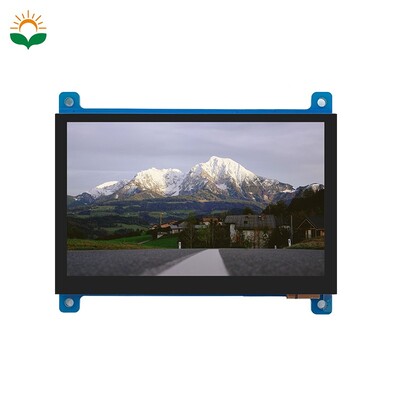
With the rapid development of the global technology industry, the display industry has become one of the core areas of the electronics manufacturing industry. From smartphones, tablets to TVs, in-vehicle displays, and emerging AR/VR devices, the advancement of display technology directly affects the user experience and market competitiveness of end products. In this context, international cooperation and competition are becoming increasingly fierce, and cross-border mergers and acquisitions and technology sharing have become the key driving forces for the development of the industry. However, there are deep strategic considerations behind these business practices, including market expansion, technical barriers, supply chain security, and the impact of national industrial policies. Starting from the current situation of the display industry, this article will analyze the drivers of cross-border mergers and acquisitions and technology sharing, and discuss the strategic logic behind them.

The core technology of the display industry is mainly in the hands of a few countries and regions, including South Korea (Samsung, LG), China (BOE, TCL Huaxing), Japan (JDI, Sharp) and Taiwan (AUO, Innolux). In recent years, Chinese mainland companies have risen rapidly through large-scale investment and government support, gradually breaking the monopoly of Korean companies in the OLED (organic light-emitting diode) and LCD (liquid crystal display) markets.
South Korea: Samsung and LG have an absolute advantage in the OLED field, especially in the high-end smartphone and TV panel markets.
China: BOE and CSOT dominate the LCD market and accelerate their expansion into OLED and Mini/Micro LED.
Japan: JDI and Sharp remain competitive in the small and medium-sized LCD market, but have been slower to make progress in the OLED space.
Taiwan: AUO and Innolux remain competitive in specific market segments, such as gaming displays.
OLED becomes mainstream: The smartphone and high-end TV markets are gradually shifting from LCD to OLED.
The rise of Mini/Micro LED: Apple, Samsung and other manufacturers are driving the development of a new generation of display technology.
Regionalization of supply chains: Affected by geopolitics, countries have strengthened their local supply chains to reduce their dependence on foreign countries.
In addition to mergers and acquisitions, technology sharing (such as patent cross-licensing, joint R&D) is also an important cooperation model in the display industry. However, this cooperation is often accompanied by competition and restrictions.
Although Samsung and LG are direct competitors in the OLED market, the two parties have avoided legal disputes through patent cross-licensing and jointly promoted the standardization of OLED technology.
BOE, TCL Huaxing and Japan's Canon Tokki (OLED evaporation equipment supplier) have established close cooperation to ensure the supply of key equipment.
Reduce R&D costs: Joint R&D can share high R&D costs.
Accelerate technology iteration: Promote the unification of industry standards and promote market adoption through cooperation.
Technical barriers: Core companies will still limit the outflow of key technologies to maintain competitive advantage.
Geopolitical implications: The United States, Japan and other countries have strengthened technology export controls to China, affecting Chinese companies' access to advanced equipment.

International cooperation and competition in the display industry is not only a corporate behavior, but also affected by national policies and global supply chain security.
China: Supporting the development of local panel enterprises through policies such as "Made in China 2025" to reduce dependence on imports.
South Korea: The government provides tax incentives and R&D subsidies to help Samsung and LG stay ahead of the curve.
United States: Promote the development of local semiconductor and display industries through the CHIPS and Science Act.
Supply chain diversification: Enterprises diversify risks through cross-border mergers and acquisitions and factory construction (e.g., Samsung has set up factories in Vietnam and India).
Independent and controllable technology: Countries have strengthened the local production of key materials (such as OLED light-emitting materials and photoresists).

In the future, the competition in the display industry will be more intense, especially in emerging fields such as OLED and Micro LED. However, due to the high technical complexity and R&D costs, companies still need to share the risks through international cooperation. Possible trends include:
More cross-border M&A: Chinese companies are likely to continue to acquire display technology companies in Japan and Europe.
Deepening technology alliances: Industry giants are likely to form closer R&D alliances to jointly break through the next generation of display technology.
Intensified policy interventions: Governments are likely to step in to ensure that critical technologies do not leak out.
International cooperation and competition in the display industry presents a complex and dynamic pattern. Cross-border mergers and acquisitions and technology sharing are not only a means of enterprise expansion, but also a manifestation of the national industrial strategy. In the future, with the acceleration of technology iteration and the influence of geopolitical factors, the industry landscape may be further reshaped. Enterprises need to find a balance between globalization and localization in order to remain invincible in the fierce market competition.
Name: lily
Mobile:8613684959210
Tel:0755-27325331
Whatsapp:8618573329919
Email:sales12@huayuan-lcd.com
Add:Factory No.9, Zhongnan High-tech Intelligent Manufacturing Industrial Park, Tianyuan District, Zhuzhou,Hunan, China, 412000